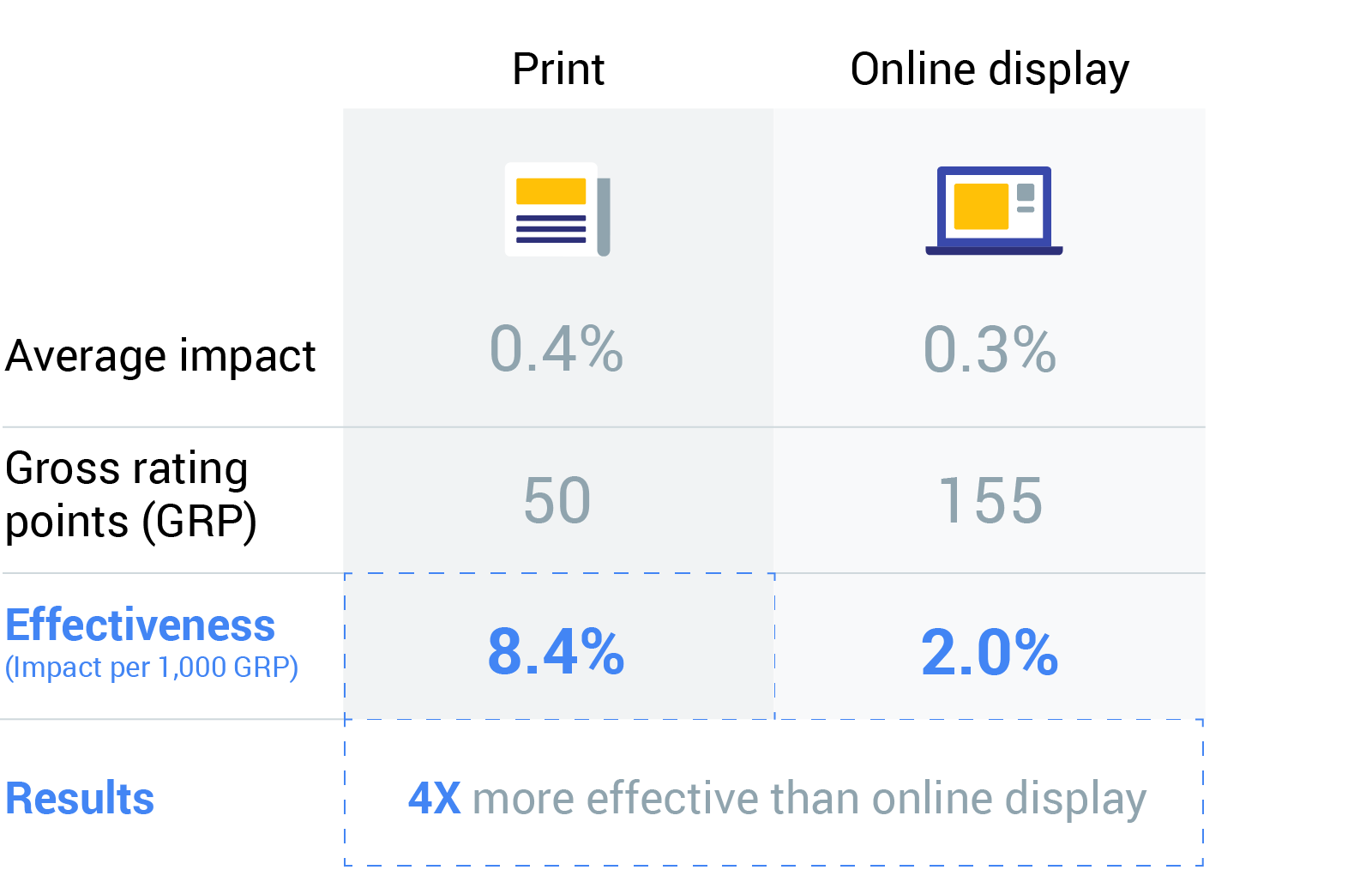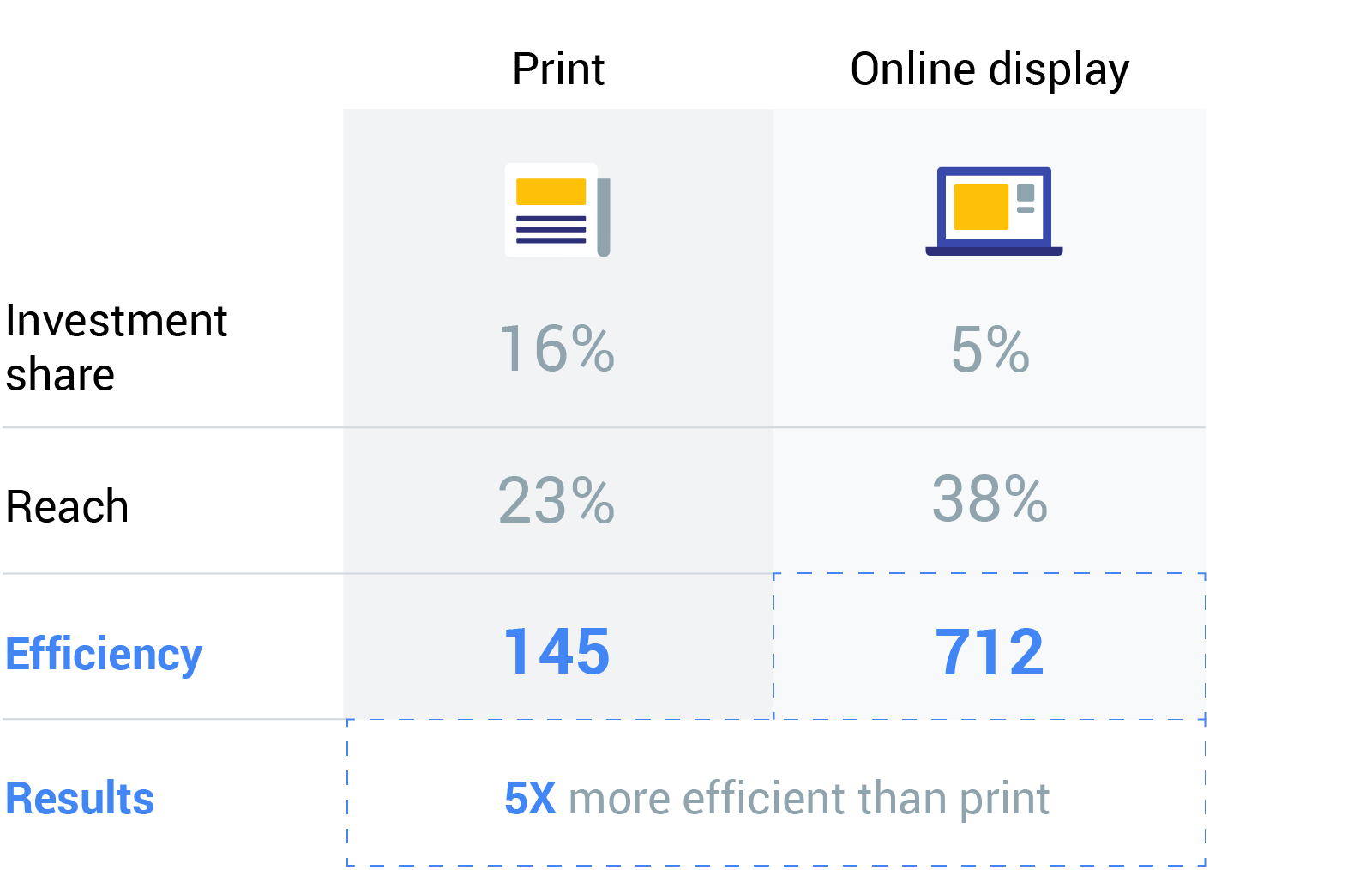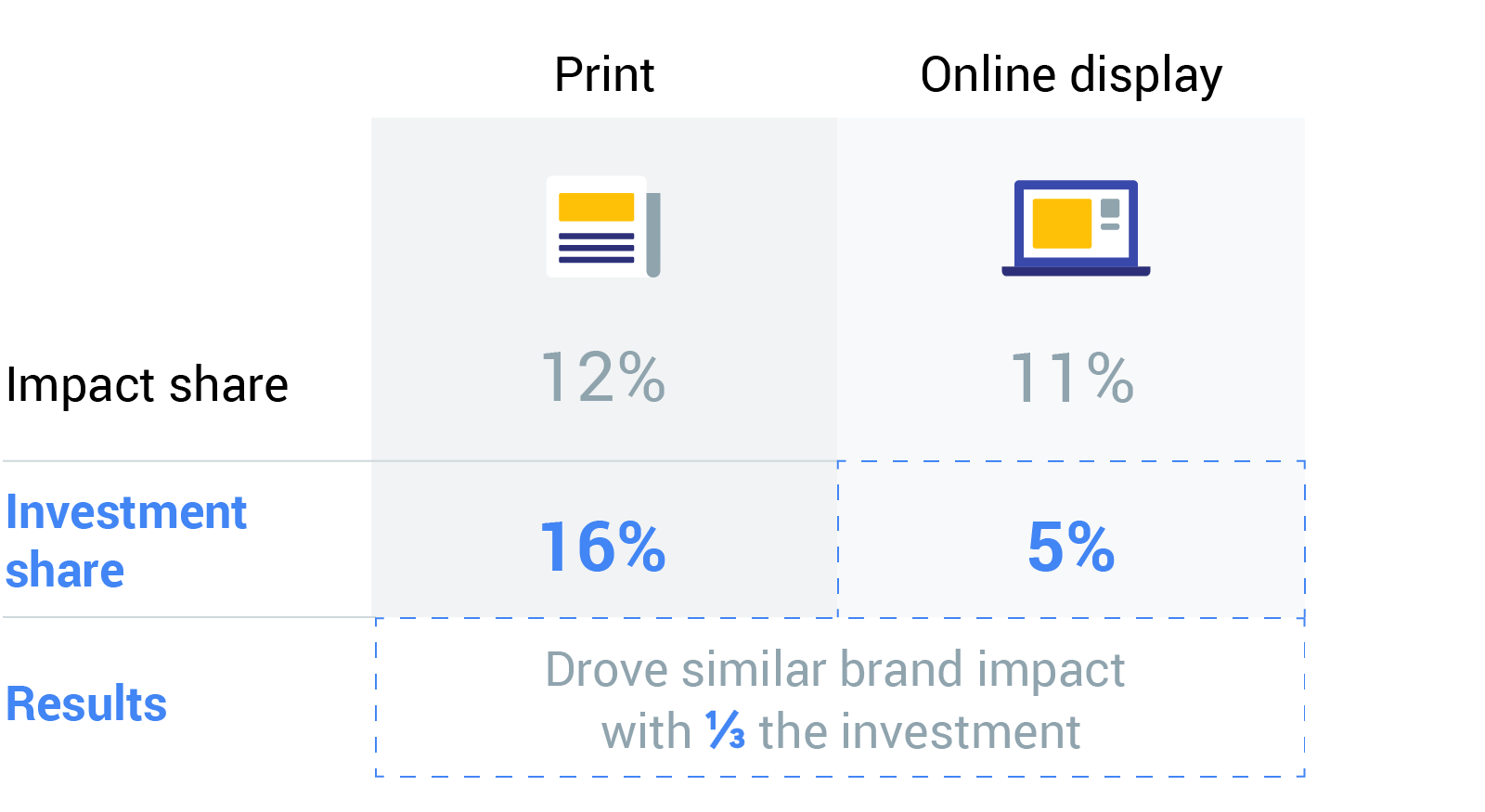In our new multi-channel, multi-format world, how is a brand to figure out whether it should invest in print or display? Or, if both, what’s the right mix?
As brands in India invest more heavily in a variety of ad formats, the need to accurately measure and compare the impact of each channel is greater than ever.
While the two formats aren’t the same, display ads are often compared to print ads because of their visual similarities. But when it comes to sizing up the impact of the two, marketers have the benefit of established industry norms and guidelines for print ads. Things aren’t quite as clear when it comes to display ads, which raises some complex questions. More and more users are going online every day, so is display a better option for achieving reach? Or should a brand consider 5 million print impressions to be a win over 1 million on display?
Finding the answers comes down to being able to put print and display on a level playing field and evaluating them both against a single metric. Without an accurate measure of their impact in relation to one another, marketers can’t know how to best pair them.
That’s exactly what we found using Kantar’s extensive CrossMedia™ study, with print — the tested-and-true format — as the baseline. By diving into more than 50 multi-channel campaigns across India, we examined the individual impact of every channel, including print and display ads. In the process, we uncovered a formula that combined the two channels for optimum results.
Establishing equivalence
Kantar’s study found that print ads were four times more effective than display in driving impact with each impression based on gross rating points (GRP)*, but display ads were 5X more efficient in driving incremental reach.


Next, by looking at how heavily brands invested in print and display as well as the incremental brand impact of each touchpoint, we found that display ads drove approximately the same level of incremental brand impact — but with one-third the investment.

Ultimately, the study revealed that print drives greater impact while display is more cost efficient. When marketers use both, they can deliver greater impact at a reasonable cost.
Print drives greater impact while display is more cost efficient. When marketers use both, they can deliver greater impact at a reasonable cost.
Finding the right balance of print and display
To calculate the optimal mix of each ad format, we looked at campaigns in Kantar’s study where print and display delivered higher brand impact than its share of investment. Across all campaigns that included print, the most efficient ones spent up to 20% of the budget on print. Meanwhile, campaigns that included display spent a maximum of 10% on display. From there, we determined that the optimal spend for print and display combined is 30%.
For marketers who use print and display to achieve similar goals, pre-determining the combined spend can make planning a lot easier. And this ability to plan better is extremely helpful for media agencies. Vishal Chinchakar, chief digital officer at Madison Media, says, “Timing is key when thinking about combining print and display. Media planners must bring an integration mindset to planning meetings for the most effective campaigns rather than thinking about it at the execution stage."
In this situation, the CrossMediaTM study suggests the optimal media mix for print and display is 65:35. Here’s an example to illustrate how we came to that conclusion:
Total campaign spend: $334
30% combined optimal spend for print and display = $100 (30% x $334)
Optimal split of $100 (rounded) for print = $65 (20/30)
Optimal split of $100 (rounded) for display = $35 (10/30)
Nitin Kochar, head of media and PR for Bajaj Auto’s domestic motorcycle business, found the study contributed to both efficiency and effectiveness: "Optimizing investments across media platforms has always been a challenge for marketers,” he said. “The [Kantar] study has given us actionable insights for maximizing campaign reach and impact. It has also helped define the role played by each media to enable better planning.”
*Gross rating points are a standard ad measurement calculated by multiplying the percent of audience reached by the number of impressions.
Methodology
Kantar calculated the “opportunity to see” (OTS) — or how often consumers potentially interacted on a particular channel — as a data source rather than using claimed recall (i.e., what they recall from memory) to eliminate subjectivity. To calculate OTS, Kantar built media consumption profiles of each viewer within the sample audience to see how much time they spent on various platforms, including print, TV, video, and display. Kantar analyzed media information such as campaign reach and delivery schedules to determine where each campaign had the potential to be seen by the most people. Media consumption data was compared with campaign reach to determine the OTS for each medium.
From there, Kantar was able to measure the reach and brand impact of each channel, defined by lifts in awareness, recall, brand association, and consideration.








